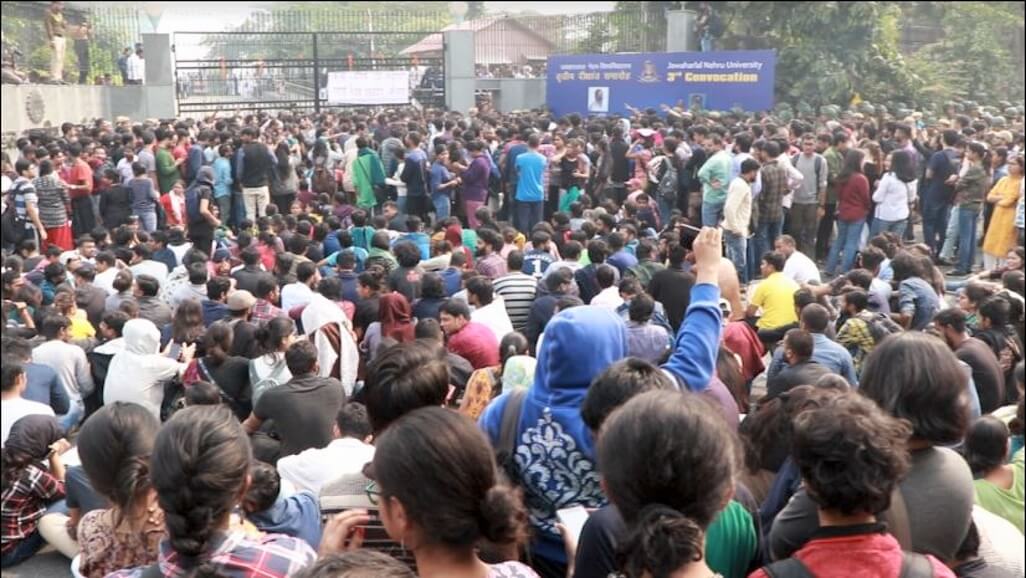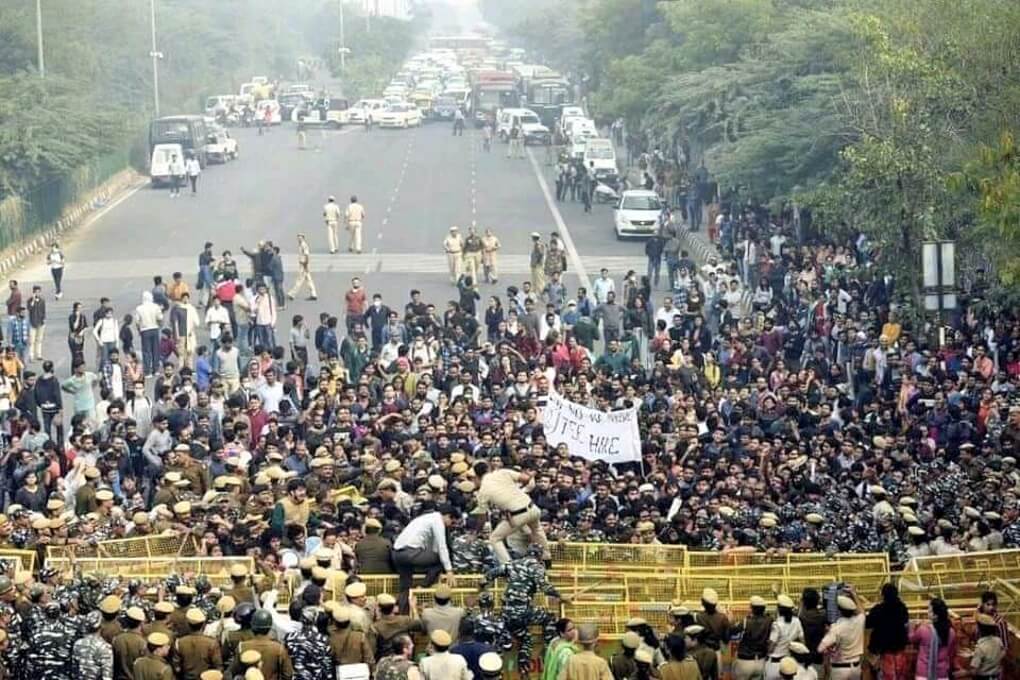JNU students have been protesting in thousands since the first of November 2019, against new hostel manual with a 70% hike in hostel fees, and patriarchal dress codes and curfews. The JNU VC, instead of withdrawing the manual and speaking to protesting students, called in the CRPF on the campus. When the JNU Convocation was held off the campus, at the AICTE Convention Hall, with the HRD Minister as the guest of honour, JNU students marched in thousands to demand that the HRD Minister speak to them. After they received a reassurance from the HRD Minister, police unleashed water cannons and batons on them, injuring several students.
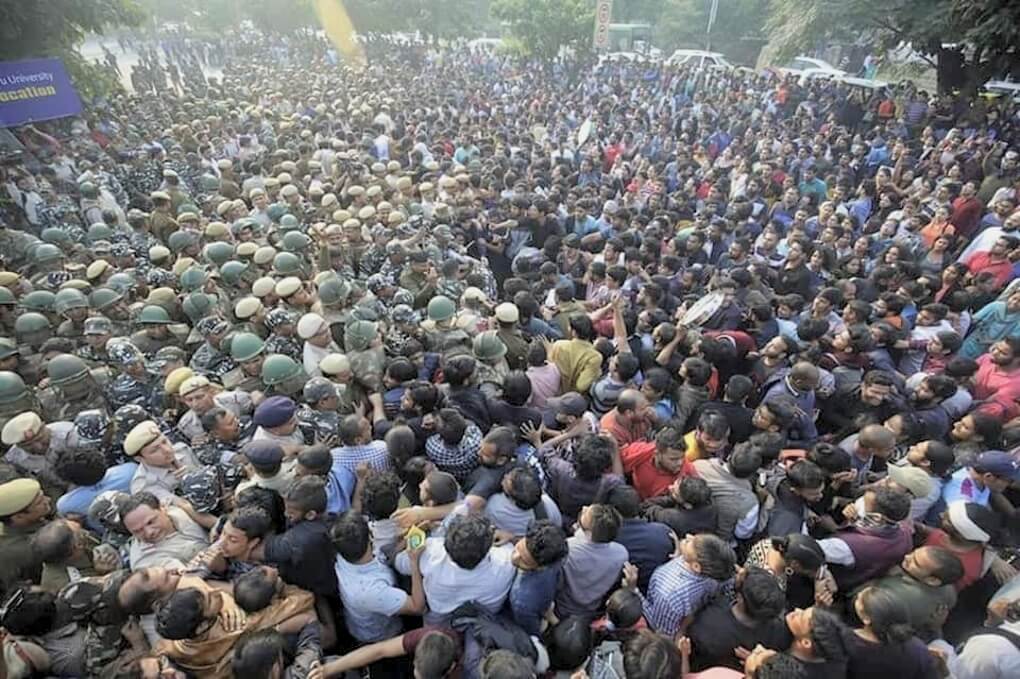
According to data collected by the University administration itself for the past two years, around 40% students in JNU come from families with income less than Rs. 12,000 per month. Some 60% of JNU students are from oppressed, backward, and marginalised communities. An increase of nearly Rs. 3000 per month amounting to Rs. 36,000 p.a. in hostel fee would force these students out of the university.
These families of 40% JNU students earn an annual income of less than Rs 144,000. The fee hike amounts to a minimum of Rs 30,000 per annum, so it means the loss of an additional 21% family income. Already, a student pays a minimum of Rs 32,620 per annum as fees and mess charges. Should a family have to pay over 40% of its annual income to educate one child?
That is why the whole of JNU is fighting. Their struggle is for the very idea of public funded education for the poorest of Indians.
Is there a “fund crunch” in JNU, requiring a fee hike? Is JNU wasting public money?
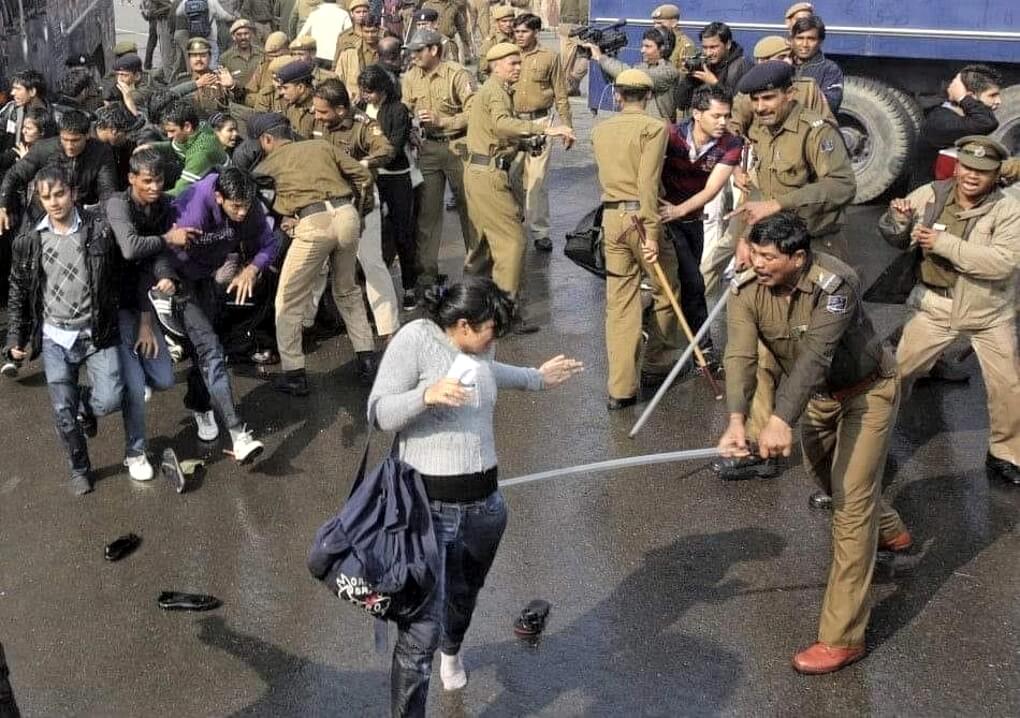
Consider the facts:
- The UGC allocation to JNU (including salary, pension and property tax & Capital expenditure) for the year 2017-18 was approx ₹401 crore (8082 students)
- The public expense to advertise the PM’s face from May 2014 to Dec 2018 was ₹5200 crores. i.e. ₹ 1094.74 cr/year.
Who is wasting taxpayers’ money?
Corporate tax waivers in the Union Budget for successive years:
2013-14: Rs 57,793 crore
2014-15: Rs 62,398.6 crore
2016-17: Rs 86,144.72 crore
2017-18: Rs 93,642.50 crore
2018-19: Rs 108,785.41 crore
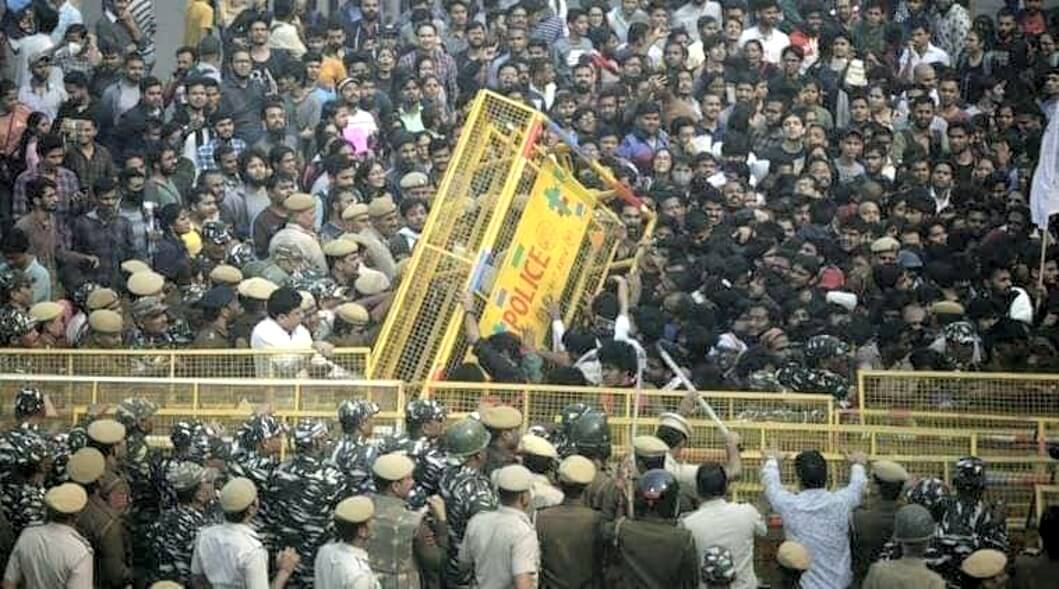
Why subsidise super-rich corporates but grudge University education to India’s poor and deprived youth?
The truth is, India’s wealth is cornered by a handful of corporate parivars: the Oxfam report found that if the 1% richest Indians pay just 0.5% extra tax on their wealth, the government can increase spending on health by 50%!
If the Government were to stop waiving taxes for the rich corporates, they could easily fund more than 250 JNUs!
The students of JNU were punched, kicked, beaten up, dragged, water cannoned by Delhi police on 11th November on the orders of Modi-Shah regime for wanting socially inclusive, quality, accessible and affordable education. The JNU student movement is fighting for education as a right for the poor, marginalized and common people of the country. On November 14, AISA has called for a countrywide protests in solidarity with JNU all over the country.
